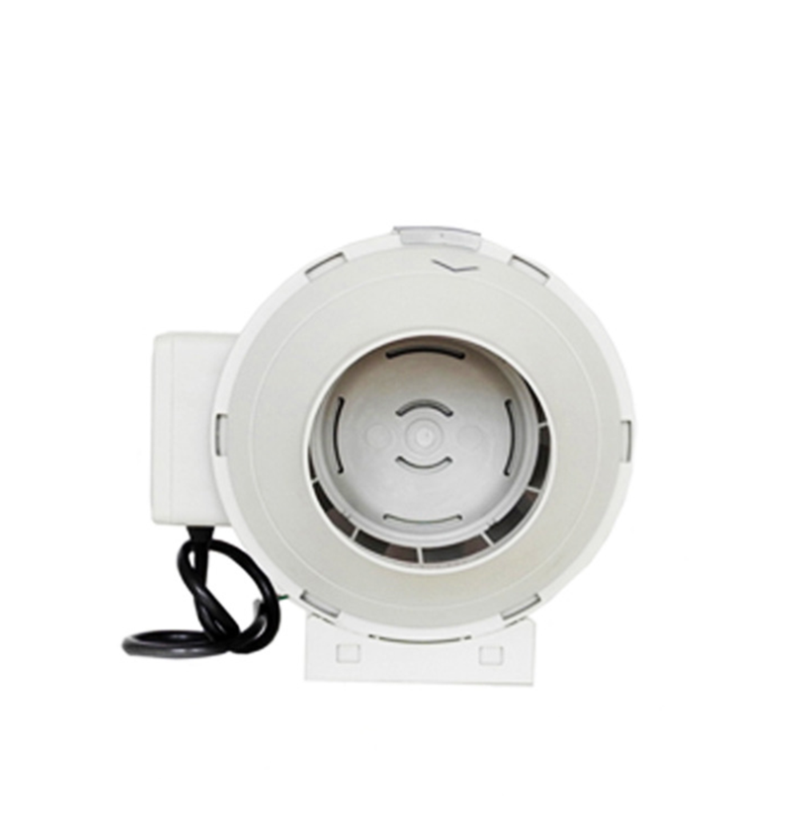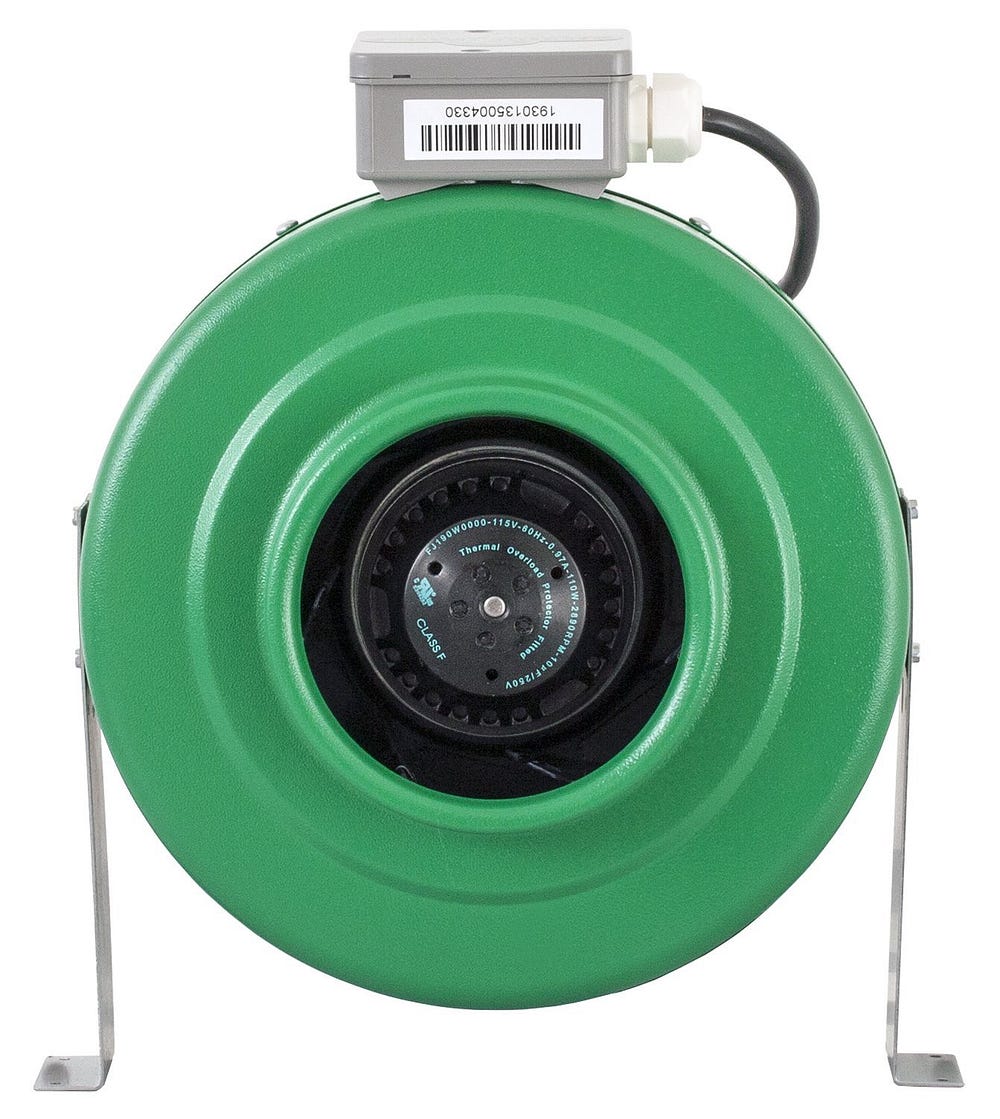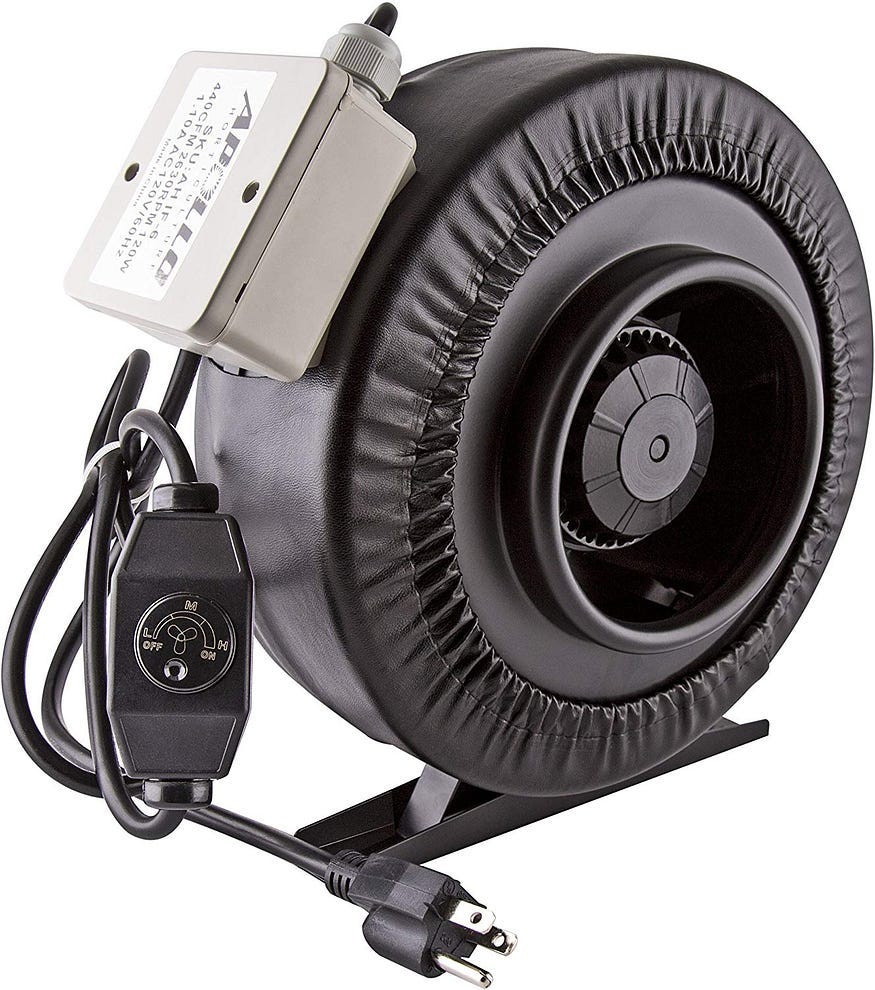未選択
-
[PR]
×
[PR]上記の広告は3ヶ月以上新規記事投稿のないブログに表示されています。新しい記事を書く事で広告が消えます。
-
ECO Farm ECOD Samsung UV+ IR 480W Dimmable LED Grow Light VS Spider Farmer G5000 480W Full Spectrum LED Grow Light
In recent years, LED grow lights have become more and more popular. Although growers find the initial investment higher than high pressure sodium lights, LED grow lights are more efficient.
LED grow lights are more efficient because they have a wider spectrum, use less energy to produce the same amount of light, provide better uniformity and coverage, last longer, cost less electricity, and emit less heat 40% less and more importantly provide higher yields and compare quality yields.
Does light intensity matter?
Yes, light intensity will vary.Plants get most of their energy from light. The intensity of light is an important factor in determining how much energy plants absorb. Higher intensity means more energy, so in general, higher intensity light is better because plants will be able to access more energy.
Spider Farmer G5000 480W Full Spectrum LED Grow Light
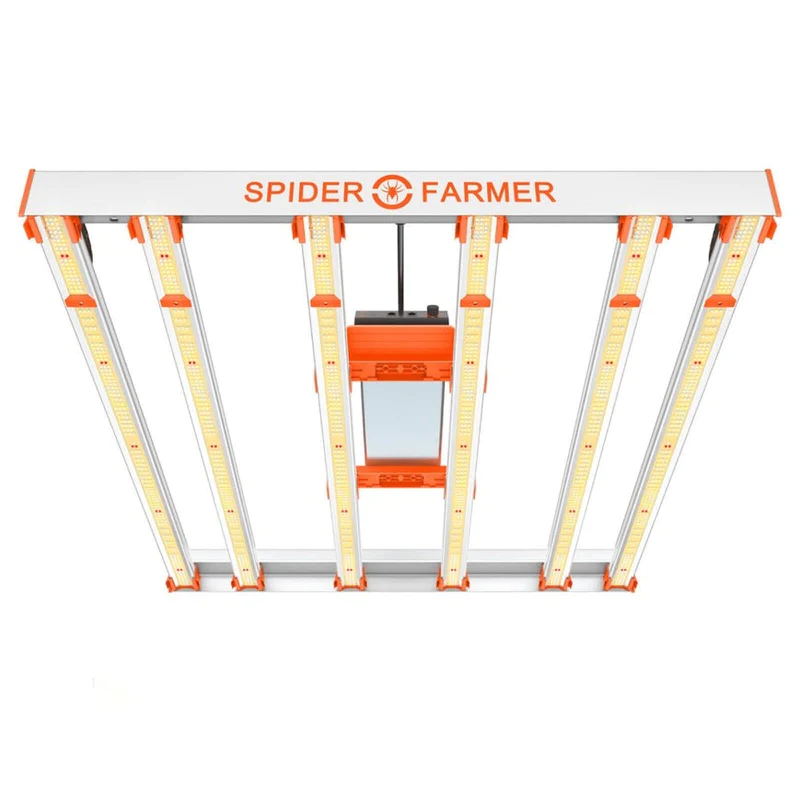
Features:
Spider Farmer G5000 led grow light has a unique elongated light bar design, which provides more even and comprehensive canopy coverage. Equipped with 1680 high-efficiency diodes, the G5000 LED grow light delivers 480 watts, achieving an impressive 2.8 umol/J PPE, covering a highly productive full-cycle grow of 4x4 feet. The G5000 Grow Light is a full-spectrum LED grow light (660–665nm, 3200–4200K, 4800–5000K) with different wavelengths of light, perfect for every stage of plant growth. The dimming button can adjust the brightness of the light, 10–100% dimming to meet the needs of plant growth.
ECO Farm ECOD Samsung UV+ IR 480W Dimmable LED Grow Light
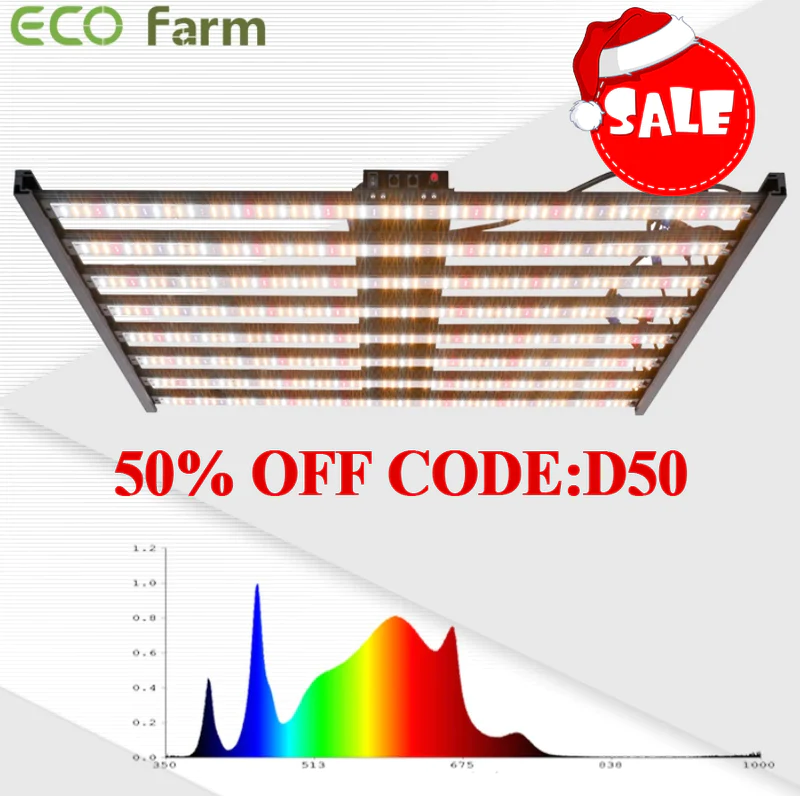
Features:
The ECO Farm full spectrum LED grow light was designed to help enhance photosynthesis so you can enjoy stronger and healthier crops! This linear horticulture lighting fixture produces a broad-spectrum lighting output made for Vertical Farming and indoor use. This premium LED growth light is an energy-efficient system that helps you to make important savings. This full spectrum LED grow lights come with 876pcs leds. Excellent spectrum mimics the sun spectrum, optimizing the whole stages of indoor growing plants from seed to flowering, to maximize the yields and ensure crop quality. It has a 2.8 umol/J efficiency level so you can make sure that this grow light system is a sustainable and eco-friendly solution for your garden.
Things to Consider When Choosing the Best Grow Lights
A lot to absorb, right? It’s understandable to feel a little overwhelmed by the different options and terminology. The best advice is to take your time and make a list of options. Here are some factors to consider that will hopefully simplify the selection process:Light Intensity
We use different terms when discussing plants and grow lights. Typically, light energy is measured in lumens. The amount of light reaching a surface is measured in lumens per square meter or lux.
These terms relate to the energy of light visible to the human eye. Scientists use photosynthetically active radiation (PAR) instead of lumens when treating plants. The amount of light interacting with plants is called photosynthetic photon flux density (PPFD).
PPFD is measured in micromoles per second per square meter. It can harness large amounts of PAR energy to boost its growth and productivity.
Remember that plants need additional CO2 to take advantage of light intensities greater than 900 PPFD. Higher light intensities increase transpiration rates, which means crops need more water.
Knowing about PPFD can go a long way if you want to push your plants to reach their potential. Making things trickier is that PPFD varies with distance, so it must be calculated from the light’s PAR value.
Thankfully, there are plenty of online PPFD calculators that can help you optimize your setup.
Heat Discharge
Every lamp used to grow plants generates heat while in use, but some emit much more heat than others. HID lamps run extremely hot, as do their bulky ballast units. This is something you must consider if you want to prevent heat stress in plants.
If you operate a HID plantation, you may need to install additional ventilation and fans to reduce temperatures. Additionally, the heat dissipated by HID lights means they must be mounted farther from the lamp housing than LED or CFL lights.
Energy consumption
Energy consumption and cost are great concerns for those who grow plants indoors. That number adds up quickly if you forget to factor in the price of a grow light that runs 18 hours a day.The more you spend initially, the more money you end up saving in the long run. The simple fact is that energy saving technologies are advanced, expensive to produce and therefore expensive to buy.
In terms of energy efficiency, the least popular are HID lamps — by a wide margin. These old, power-hungry lights are cheap to buy, but they don’t work.
CFLs are somewhere in between. They’re much better than HIDs, but still not as efficient or long-lasting as LEDs. On a positive note, they’re also less expensive.
LEDs have won awards for energy efficiency. They consume much less power than CFLs and pale in comparison to power-hungry HID varieties. Their relative newness and complex internals make them expensive and often out of the hobbyist price range.
Conclusion
LED grow lights have revolutionized the way plants is grown, making it possible to produce high-quality buds that are potent and delicious. When selecting LED grow lights for plants cultivation, growers should consider factors such as light spectrum, intensity, area covered, heat output, and cost to ensure they choose the best light for their operation. By following best practices for using LED grow lights and using supplemental lighting when necessary, growers can improve the quality of their plants and maximize yields.
PR -
ECO Farm ECOZ PRO 700W Samsung 301H Chips LED Grow Light VS Iluminar HyperMol 720W LED Grow Light
Every serious indoor gardener should know about the different types of LED grow lights.
This knowledge will help them choose the best LED grow lights to guarantee optimal growth of the plants.
Unknown to many, grow lights provide the relevant light spectrum needed for photosynthesis.
One common type of grow light is the full-spectrum LED light, which produces a combination of wavelengths similar to natural light.
We also have red and blue lights to support flowering/fruiting and vegetative growth stages.
In addition, we have multi-band grow lights, which use multiple wavelengths to promote plant growth.
But that’s not all!
This article provides an overview of all LED grow light types and tips for getting the best results. let’s start!
The benefits of plant growth lights:
Grow lights are essential for indoor gardening, especially if you don’t have enough natural light. Without grow lights or natural light, your plants won’t get the amount of light they need to thrive. Investing in high-quality grow lights is often expensive, and if used incorrectly, they won’t work as well as a small grow light kit that only costs $35. Depending on your budget, you should choose the best grow light that is easy to use and fits your needs.Also, it’s important to understand that you can’t get more than what a grow light has to offer. It is impossible to get good results if you use a single grow light to grow all the seedlings. One of the important things you must know is the type of plants you are growing and the amount of light they generally need before buying any. It is generally recommended to choose bulbs in the 4000 to 6000 Kelvin range. Choosing a bulb in this range ensures that the color temperature of the emitted light is well balanced and includes the full spectrum of warm and cool colors.
ECO Farm ECOZ PRO 700W Samsung 301H Chips LED Grow Light
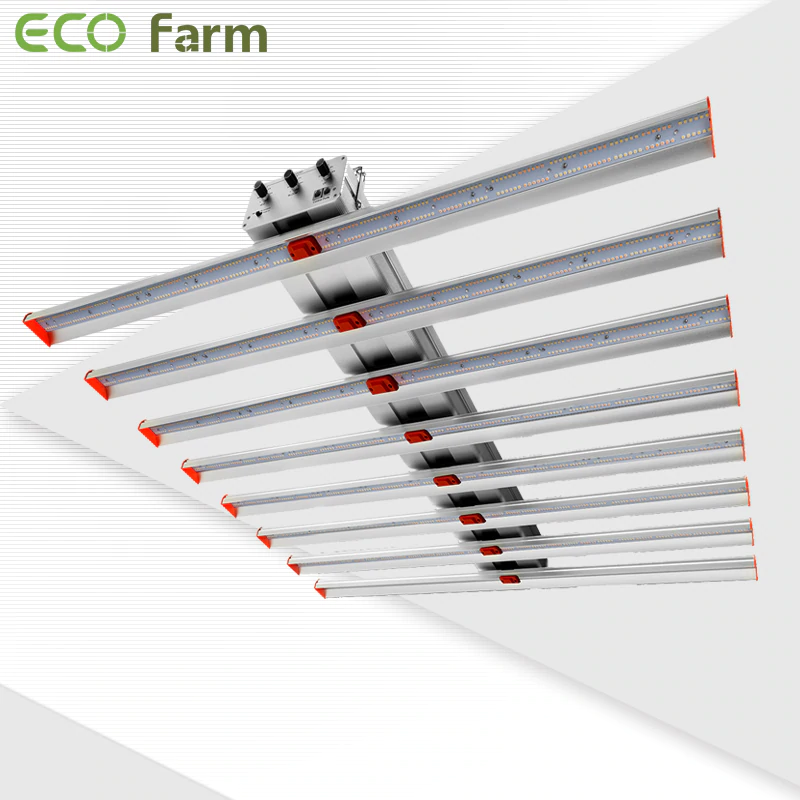
Features:
The ECO Farm LED grow light with unique designed extended 8 bars LED grow light provides more even and full canopy coverage, especially to the outer edges cultivation areas. With 2784pcs SAMSUNG LM301H& Os-ram Chip, This Led grow lights draw 700 watts with 1960 umol/s, achieving an impressive PPE of 2.85 umol/J, coverage for 4’x4’ of high-yielding full-cycle growth. Full-spectrum is perfect for veg to bloom, to adapt to each phase of the plant cycle. The dimming knob is ideal for growers to adjust the light intensity according to different growing stages. Bar grow light design and aluminum heat sink on the back contribute to better airflow and great heat dissipation.
Iluminar HyperMol 720W LED Grow Light
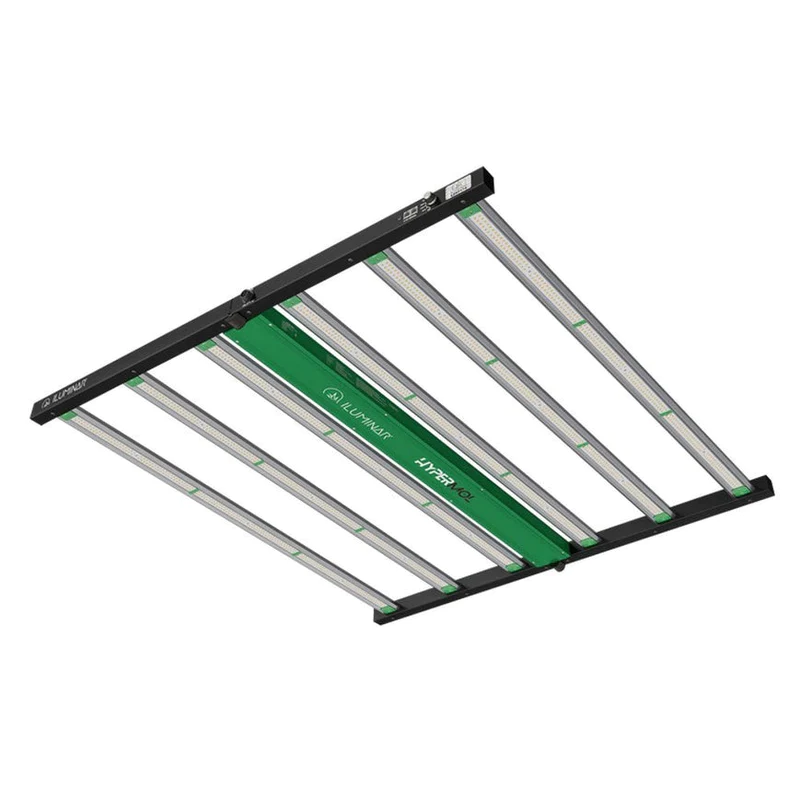
Features:
Iluminar LED Grow Light is a plug and play high performance LED grow light. Advanced SMD chips are used with non-adhesive potting to ensure longer life and better durability. The unique diode layout provides a uniform 4' x 4' footprint with a minimum of 8–12 inches from the canopy. More fins allow for quiet and efficient cooling.
Best Led Grow Lights For Starting Seeds Buying Guide
One of the most important decisions you will make when starting seeds indoors is what type of light to use. While there are many types of grow lights available, the best LED grow lights for seeding have some distinct advantages over other types of lights.
Efficiency
LEDs generate very little heat, making them ideal for small spaces. They use less energy than other types of lights, making them more cost-effective in the long run.Quality
The quality of the LED lights also plays an important role. You can’t, but some lights are defective and won’t work for a few days, because LED lights are more expensive than fluorescent lights.Cost-effectiveness
LED grow lights are known for saving electricity and energy. The initial investment of installing LED lights can be high, but these lights will help you save money in the long run.Conclusion
Choosing the right LED grow lights is imperative for any indoor growing business to be successful. Here, we’ve highlighted some of the best LED grow lights on the market right now, each with its own unique characteristics to suit the needs of different growers. However, we understand that every grower has their own needs, so we offer a variety of LED grow lights to suit your budget and space size.
-
ECO Farm ECO D700 700W Samsung LM281B Chip LED Grow Light VS Iluminar HyperMol 720W LED Grow Light
Anyone who wants to grow plants indoors can benefit from LED grow lights. In a controlled environment, you can set the brightness your plants need. It doesn’t matter whether the climate is favorable or not.
Consider upgrading or getting into indoor growing, there are new grow lights on the market right now. With all the advantages, you’ll get a faster return on investment, and you’ll love growing indoors even more. While nothing beats natural light, LED grow lights are a powerful alternative to growing outdoors.
How do grow lights work?
First, a quick science lesson. Plants need sunlight to generate the energy they need to grow and reproduce. This process is called photosynthesis. The goal of grow lights is to try to replicate solar energy, allowing plants to grow indoors where natural light is scarce.Grow lights produce photons, and so does the sun. Plants then use these photons for photosynthesis.
Each photon has a different wavelength, which the human eye perceives as a color. Some of these wavelengths are better for plants than others. Plants love blue and red light.
A good grow light will try to produce the correct color so that the plants get everything they need indoors. LED lights are gaining popularity as grow lights for indoor plants because they can emit a single color and are therefore very efficient.
ECO Farm ECO D700 700W Samsung LM281B Chip LED Grow Light

Features:
This ECO Farm LED grow light features the highest output white chips and Osram chips, with a high energy efficiency of 2.6 umol/J, PPF 1820 µmol/s, LED grow lights provide plants with powerful and high-quality light to maximize yield . The vegetable footprint is 5 x 5 feet and the flowering footprint is 4 x 4 feet. This grow light has an excellent full spectrum (3000K, 5000K, 660nm, 730nm IR, 395nm UV) and is ideal for all growth stages (germination, cloning or cuttings, mothering, vegetative and flowering applications) for higher yields . The dimming knob can adjust the light intensity at will. Designed with daisy chain function, up to 100 lights can be connected. Multi-light connections with uniform dimming are especially beneficial for large-scale indoor and commercial cultivation.
Iluminar HyperMol 720W LED Grow Light

Features:
Iluminar LED Grow Light is a plug and play high performance LED grow light. Advanced SMD chips are used with non-adhesive potting to ensure longer life and better durability. The unique diode layout provides a uniform 4' x 4' footprint with a minimum of 8–12 inches from the canopy. More fins allow for quiet and efficient cooling.
Factors to Consider When Choosing Grow Lights
Choosing grow lights is more than just choosing a type. Several key factors should guide your decision-making process to ensure you provide the best lighting conditions for your houseplants.
Light Intensity and Coverage: Choose grow lights that provide the right intensity for your plants and cover your entire garden area.
Color Spectrum and Plant Growth: Learn how different colors affect plant growth and choose grow lights that meet a plant’s specific spectral needs.
ENERGY EFFICIENCY AND COST-EFFECTIVE: Choosing energy-efficient LED lights can save you money on your electricity bills in the long run.
Heat Generation and Ventilation: Consider light-generated heat and ensure proper ventilation to prevent damage to plants.
Durability and Lifespan: Buy grow lights with a long lifespan to avoid frequent replacements.
EASY TO INSTALL AND USE: Choose grow lights that are easy to install and use based on your comfort level.
Additional features and customization: Look for lights with adjustable intensity, timers, or remote controls for more convenience and customization options.Conclusion
In conclusion, grow lights are an essential part of indoor gardening. They can help you grow your plants better indoors without worrying about less natural light getting in. Overall, we’ve tried to answer some of the best questions people typically ask about grow lights, but let us know in the comments if you have any questions. Also, before purchasing any grow lights, you must check the minimum requirements for the plants you want so that you can make the right decision to choose the grow lights that meet the needs of your plants.
-
How to Choose the Best 2x2 Grow Tent Kits 0f 2023
Are you ready to dive into a world of lush foliage and lush plants from the comfort of your own home? Look no further!
In this comprehensive affiliate blog, we’ll reveal the space-conscious gardener’s secret weapon: the 2×2 grow tent.
You’ll explore the incredible benefits of these compact garden power packs, learn about essential accessories for maximum success, and find our curated product recommendations to suit your unique needs.
That’s not all! We’ll also share insider tips on setting up and maintaining a grow tent to ensure your plants thrive more than you ever imagined possible.
So let’s embark on this indoor gardening journey and unveil the perfect 2×2 grow tent.
What is a Grow Tent?
At its most basic, a grow tent is a fabric-wrapped metal pole frame. This fabric is often coated with reflective material on the inside to maximize the light available to the plants growing inside. Grow tents differ from grow boxes in that they are more versatile and easier to transport.Grow tents are quickly gaining popularity in grow rooms and grow boxes.
ECO Farm 2'x2' Essential Grow Tent Kit
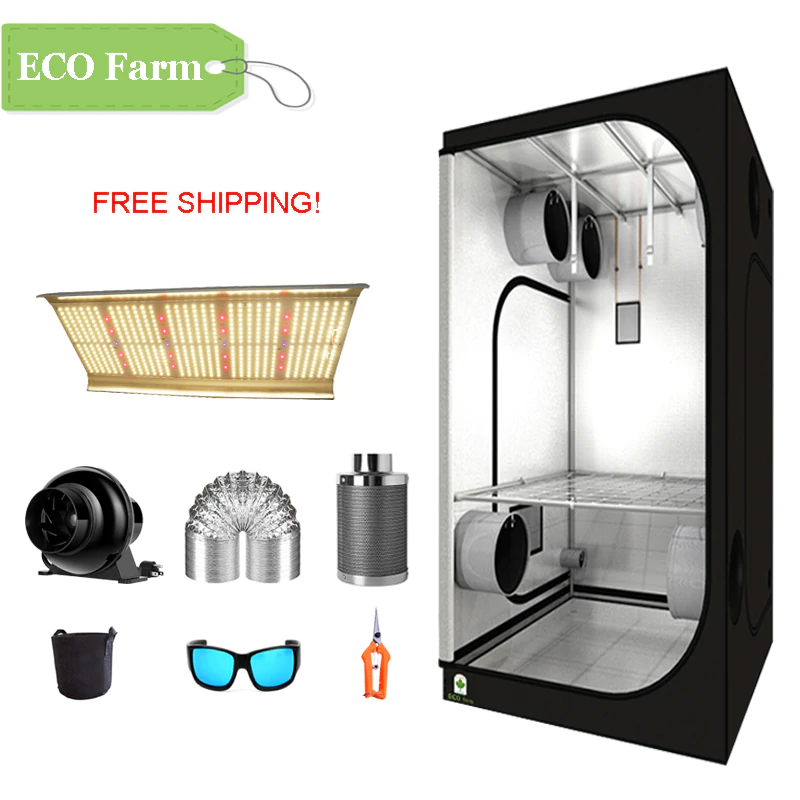
Features:
The ECO Farm grow tent kit is simple to set up, making it easier to start planting. The first benefit of purchasing the ECO Farm Essential planting tent kit is that it is very compact. Even if your apartment is small and closet space is small, you can set up a basic planting kit there. The complete growth tent kit will include products and high-quality equipment. If you prefer to work in harmony, then you should choose a suitable size growth tent kit. If you buy this kit, you will not need much time to enjoy the professional garden. If you want to grow small plants such as green plants and herbs, the full-spectrum planting tent kit is very suitable for different purposes. The power outlet is grounded so that you can plug directly into the electronic device. High-quality products and equipment are included in the complete planting tent kit. The ECO Farm Essential planting tent kit is removable, so you can take it with you. 96% highly reflective waterproof diamond polyester film (enhanced reflective effect). 600D highly reflective diamond polyester film, large heavy-duty zipper and double stitching can prevent light leakage.
AC Infinity CLOUDLAB 722, ADVANCE 24" X 24" X 72" Grow Tent
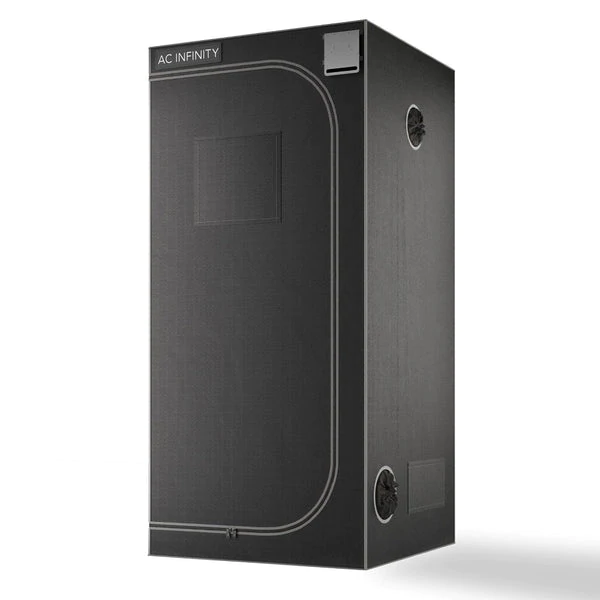
Features:
AC Infinity grow tents are designed to grow plants indoors by providing complete control over climatic conditions. This grow tent features a quick view window and is made of 2000D thick waterproof Oxford canvas for increased durability and light fastness. A cross pattern of diamond mylar is arranged on the inner wall surface, which will reflect and maximize the light output of your growing. To ensure maximum reflectivity and prevent light leakage, the inner ribbon is stitched to create a seal that lines the zipper inside the grow tent. Additionally, the dual drawstring design of the duct ports closes them on both sides for enhanced light sealing.
Mars Hydro 27" x 27" x 63" Indoor Plants Grow Tent
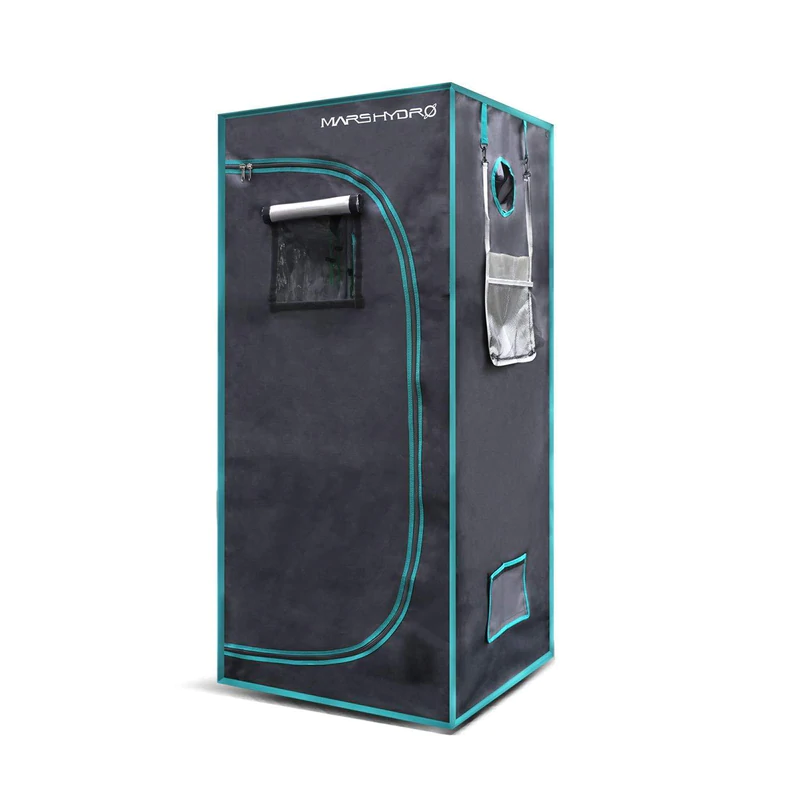
Features:
The interior of the MARS HYDRO indoor grow tent is made of highly reflective diamond mylar. (Other brands of polyester film and reflectivity as low as 50% will not provide efficient light.) MARS HYDRO 1680D canvas, double stitched, ripstop, perfect light lock. Mars Hydro’s grow tents maintain a 100% light beam inside and help your plants absorb more light. Stable metal corner adapters and poles are trusted supporters of the tent, stand strong, neither rust nor peel, and can be installed quickly and easily without tools. Mars Hydro’s heavy-duty metal zipper with double black lining is the best on the market to create a light-tight seal.
Things to Consider When Buying a Grow Tent Kit
When you’re in the market for a grow tent kit, there are a few things you need to keep in mind in order to get the best product for your money. Below, we’ll discuss some of the most important factors to consider when purchasing a grow tent kit.Size
One of the most important things to consider when buying a grow tent kit is the size of the tent. You need to make sure you choose a size that will accommodate all your plants. Also, you’ll want to make sure the grow tent kit you choose is tall enough for you to stand up on.Material
Another factor to consider when choosing a grow tent kit is the material the tent is made of. You need to make sure that the material is durable and will last a long time. Also, you’ll want to make sure the material is thick enough to block all light.Ventilation
Ventilation is another important factor to consider when choosing a grow tent kit. You need to make sure the tent has enough ventilation holes to allow proper airflow. Also, you’ll want to make sure the vents are in the right place so they don’t blow directly onto your plants.Price
Of course, you also want to make sure to consider price when choosing a grow tent kit. You need to find a grow tent kit that fits your budget. However, you should also keep in mind that price is not always an indicator of quality. There are some very affordable quality grow tent kits out there.Feature
Finally, you also want to make sure you consider the available features of your chosen grow tent kit. Some grow tents come with built-in water reservoirs and overflow pipes. Others come with a variety of different shelves and trays. You want to make sure you choose a grow tent kit that has the features you need.Conclusion
The 2X2 Grow Tent Kit is an excellent choice for anyone looking to maximize plant production in a small space. Whether you’re an experienced grower or just starting out, these tents offer a compact and versatile solution that can accommodate a variety of plant types and growth stages.
With its durable construction and customizable features, the 2X2 Grow Tent provides a controlled environment that can help you achieve optimal plant growth and health. Plus, they’re easy to install and maintain, making them a great choice for growers of all skill levels.
So if you’re looking to make a big difference in a small space, consider getting a 2X2 grow tent kit. With its compact design, customizable features and efficient use of space, it’s a smart choice for anyone looking to make the most of their indoor garden.
-
Best 4" Inline Duct Fans for 3×3 Grow Tents
An inline fan is a fan that can be used to ventilate your grow tent to effectively manage your growing environment and reduce odors. Inline fans are placed in-line with the ductwork of your grow tent, and they are used to move air in and out of your environment.
Not sure where to place your ducted fans for best performance? This article will help you figure it out so you can get your ventilation system right the first time — saving you time.
The right size fan can really do wonders for your grow tent. A 3×3 grow tent requires a 4” inline fan.
I recommend that you properly calculate the CFM of your tent before buying a fan, unlike what I did in the first place.
Heed this advice!
I hope you enjoy all the best fans of the 3×3 grow tent I recommend to you. But you only need to get one of them.
Good luck!
ECO Farm 4 Inch In-line Fan Exhaust and Intake Fan for Grow Room-White
Features:
While this ECO Farm inline fan might be small, it actually comes packing a punch. It is one of the best inline fans on the market. The unit comes with a high and highly efficient air flow. In addition to this, the unit operates quietly which is perfect . It draws a low amp which makes it perfect for small outlets and inlet connections. As though this is not enough for a feature, the unit also comes with a sealed motor shaft. This works to protect the fan from moisture. The strong casing is nickel plated which protects the unit from corrosion. Courtesy of its small size, the fan is compact and easy to install into any flat surface. Despite its 4” fan size, the unit still provides a whopping 190 CFM of airflow. Very low noise, Less than 37db, with variable speed controller, can easily adjust the fan speed. The fact that it is one of the least expensive units on the list makes it a perfect solution if you are just starting out with a small space.
Hydrofarm Active Air 4" Inline Duct Fan
Features:
Hydrofarm is one of the most trusted brands in the growing industry. The active air inline fans are among its in-demand products. Active Air inline fans are well-loved by many because of its proven durability. It is being designed with a ceramic-coated metal housing. This coating increases the lifespan of the components by reducing heat and friction. It also helps to prevent corrosion caused by thermal and acidity. Furthermore, the ceramic layer also gives your device a nice sleek-look. This inline fan is being equipped with a premium molded impeller. Its high-quality construction makes it possible to deliver excellent performance. Moreover, this fan also produces low-noise output. It is a big advantage especially for those who wish to keep their grow spaces discreet and low-key.
Apollo Horticulture 4 Inch Inline Duct Fan
Features:
The Apollo Horticulture inline fan is made to be of high quality and is easily the best inline fan. However, despite their high qualities and features, they also are designed to be budget friendly. The unit is made of steel. This makes it strong and durable. In addition to this, the fan casing and parts are all covered in powder paint to protect it from humidity and keep it from rusting. Needless to say, these were designed to last. However, the brand does not offer a lot of options as other fans on the list with regards to fan size. It is also important to note that the inline vent fan comes with a built-in speed controller. Additionally, it comes with a noise rating of 69dB.Last but not least, to make the inline fan easy to install, it features a mounting bracket as well as an instructional pamphlet.
Where to Install Inline Fans for Best Performance
The location of the duct fan depends on the space given and what the fan will be used for. For example, if you want to install it in your house to help with ventilation, then we recommend placing it in the attic. This is because warm air rises, so more hot air collects in the attic than any other room in most homes. By installing ducted fans in your attic, you can expel hot air and increase the efficiency of your ventilation system.
If you are installing in a grow tent then we recommend that you place the inline ducted fan near the top of the grow tent. This will help cool the tent and promote optimal airflow.
However, sometimes this is not possible. For example, you have a small grow tent where you can only grow a few plants without adding any extra equipment. When you factor in grow lights and carbon filters and how tall your plants will end up growing, there may not be enough room for a fan either.
You might lose some performance if you mount the fan outside the tent, but you’ll be able to preserve all that valuable growing space for your plants and lights.
Make sure the duct fan is the right size for the space
Smaller fans will have to work harder, so won’t work as well in larger spaces. It’s better to buy a bigger fan and use less power than to use a small fan and max it out — you’ll save energy, and the silent motor will thank you.
Inspect duct fans regularly and clean as needed
When a fan gets dirty, it works less efficiently and may eventually fail. To clean the fan, simply unplug it and remove any debris that may have collected in the blades or housing. If you live in a dusty area, we recommend checking and cleaning your fans every few months. We recommend replacing any carbon filters you use every few months to keep your system clean.
Consider installing a variable speed controller
This will allow you to adjust the speed of the fans as needed, saving money on electricity bills.
Keep your specific situation in mind and choose the method that works best for you. The goal is to achieve maximum performance while avoiding fan interference. Sometimes you have to settle for one thing and not another.
How to Install a Duct Fan
The best thing you can do when first learning how to install a ducted fan in your grow tent is to follow the instructions provided by the manufacturer. While instructions may vary based on your specific product, general instructions on how to hang an exhaust fan in a grow tentConnect Air Ducts to Grow Tent — Your grow tent should have room to attach air ducts. Place a pipe where indicated, usually this is a hole in the top corner of the tent.
Attach the bracket to the fan — your fan may come with mounting equipment. Follow the manufacturer’s instructions to attach the fan to the mounting hardware.
Attach the fans to the tent mounting poles — Many grow tents also have pre-installed equipment near the vents. Use it to connect your fan.
Securing the Fan — Once the fan is attached to the tent, use zip ties to ensure it is secure. This will provide more stability to the fan.
Connect the tubing to the fan — Once the fan is in place, you can connect the tubing to the fan. Test that the fan is working properly and directing air outside or to an appropriate indoor location.
Conclusion
Growing plants inside a grow tent requires adequate air circulation to prevent mold and mildew. You also need to ensure the optimum temperature and humidity inside your grow tent. An oscillating fan is the easiest solution to handle this situation.
But not all oscillating fans perform well enough. Fans for small grow tents should be energy efficient, quiet and provide adequate airflow. We’ve reviewed some of the most popular fans to help you find the best oscillating fan for your grow tent. With variable speed settings, easy mounting options, and low noise, these fans will do an excellent job inside your grow tent.

